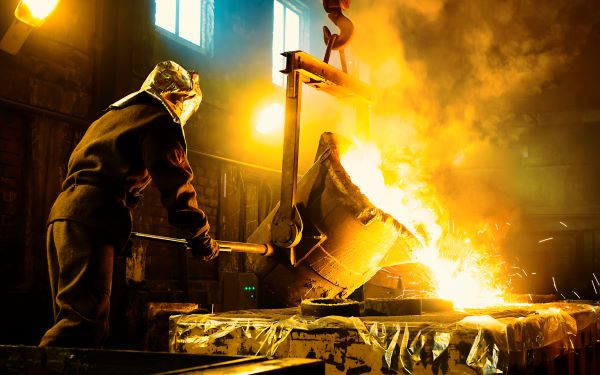According to Scotland-based energy research and consultancy company Wood Mackenzie, China - the world’s largest steel consumer with 49 percent of global demand in 2024 - will see steel consumption fall by 5-7 million mt annually over the next decade. This structural decline is reshaping the balance of power in the steel industry, creating opportunities for India, Southeast Asia and the MENA region to emerge as new growth hubs.

China’s declining share in global demand
Wood Mackenzie’s report stated that China’s dominance in steel consumption is set to erode significantly. By 2050, its share of global demand is projected to drop to 31 percent, down from 49 percent in 2024. The main drivers include:
- A shift away from infrastructure-heavy growth.
- Weakness in the real estate sector, historically a cornerstone of Chinese steel demand.
- Policy priorities that emphasize rebalancing over stimulus-driven expansion.
“China’s overcapacity crisis is reaching unprecedented levels, with a projected surplus of 50 million mt in 2025 that could balloon to 350 million mt long-term,” said Charvi Trivedi, senior research analyst at Wood Mackenzie.
Despite expected output cuts of 240 million mt between 2024 and 2050, China will remain a dominant force in global supply due to its vast production infrastructure, according to the report.
India and Southeast Asia: rising steel powerhouses
In contrast, India and Southeast Asia are experiencing robust growth trajectories:
- India:
- Steel demand grew eight percent in 2024 and is expected to grow seven percent in 2025.
- Market share projected to rise from eight percent to 21 percent by 2050.
- Growth driven by infrastructure, transportation, urban development, renewable energy, and manufacturing (automotive, machinery).
- Southeast Asia:
- Achieved six percent demand growth in 2024, with four percent growth forecast for 2025.
- Market share expected to double from five percent to 10 percent by 2050.
- Vietnam, Thailand, and Indonesia lead growth, benefiting from industrialization and proximity to key raw material sources.
Global production outlook
Global crude steel production is forecast to grow at a modest 0.7 percent through 2050, with developed economies showing flat or negative growth.
- India will nearly triple production by 2050, becoming the second-largest producer, supported by local iron ore availability and modern integrated steel plants.
- Southeast Asia will strengthen its competitive edge through electric arc furnace (EAF) adoption and downstream capacity.
- China will continue to face consolidation pressures despite retaining global leadership.
Trade tensions and regionalization of supply
Global steel trade volumes of 381 million in 2024 are set to shrink by 5.4 percent this year, largely due to:
- Rising antidumping duties on Chinese steel exports.
- Escalating protectionist measures worldwide.
By 2050, only 12 percent of global steel production is expected to be exported (vs 25 percent today), as regional supply chains and trade blocs gain importance. The introduction of carbon taxes will further limit exports from emission-intensive producers.
Policy and green transition challenges
Wood Mackenzie highlights a widening gap between climate goals and industry realities:
- China will face over 350 million mt of excess capacity by 2050, mostly in carbon-intensive blast furnaces.
- In Europe, only 20-25 million of the 75-80 million mt of announced new EAF capacity is under construction, while 15-20 million mt has been paused or cancelled.
- Rising inflation, weak demand, and margin compression challenge financing of green steel projects.
“The combination of economic headwinds, insufficient policy support and limited markets for green steel premiums are constraining the industry's decarbonisation appetite,” noted Trivedi.